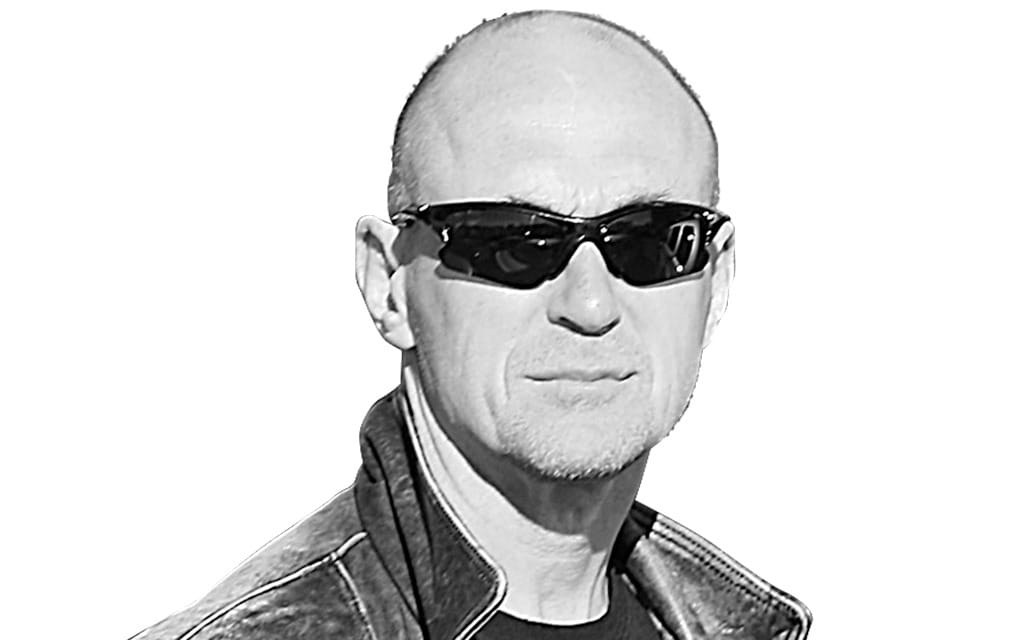Ducati CEO Claudio Domenicali has recently confirmed that the Italian marque will build a V4 superbike based on its powerful MotoGP racer. “The engine development we have made in MotoGP is exceptional,” Domenicali told Motomatters.com at the MotoGP team launch. “We have an engine which is very reliable, very light, compact and has a lot of interesting technology. We are seriously thinking of introducing it to regular customers, because it is a masterpiece of engineering.”
And though it will hardly be cheap, Domenicali — no relation to Stefano Domenicali who now runs Lamborghini — promises “it will not be a kind of exotic bike like the Desmosedici, but a more regular high-end sport bike.”
What’s not to like about a super high-tech and compact V4, long lauded as the most powerful powerplant in motorcycle racing, being made available to the public for about the same price as a Panigale R?
Well, the first possible conundrum is that depending on how you read Domenicali’s pronouncements, the new V4 might actually replace the Panigale R. No more top-of-the-line V-twin superbike from the company that is singularly associated with the twin cylinder superbike. Whether you’re old enough to remember the original 750 SS or just jumped on the bandwagon when the still-the-most-gorgeous-bike-ever-built 916 appeared, Ducati has been the cantankerous rebel, never succumbing to the ruthless engineering reality that four cylinders are better — or, at least more powerful — than two. Hell, Ducati adopted desmodromic valve actuation specifically because it was the only way to make their big twins rev as hard as a four.
And all that may come to an end. Oh, probably not right away: One can’t see Ducati backing away from its V-twin legacy abruptly. But Domenicali has confirmed that Ducati will go superbike racing with the new V4 (probably in 2019 as the all-new superbike is not expected before the 2018 model year and Ducati’s race engineers will want some time to flush out any issues).
With so much focus on MotoGP in recent years — the Rossie/Marqez meltdown, Lorenzo moving to Ducati, KTM joining the fray, etc. — World Superbike has been somewhat sidelined, so you may not have noticed that recent rule changes have moved WSBK racers a little backwards, at least technology wise. 2017’s rule changes dispensed with “split” throttle bodies and now require counter-balancers if the showroom model is equipped with them. Basically, the ZX-10R that Jonathan Rea races around — with amazing alacrity; he was faster than all but one MotoGP rider at the recent Jerez test — is the same street bike you can buy at a dealer with a little headwork and a (serious) bump in compression. Dorna, owner of both racing series, very much wants WSBK to be “everyman” silhouette racing while MotoGP bikes are the big buck prototypes that we can only dream about.
How, then, is Ducati’s V4 going to fit into this philosophy? Ducati will no doubt sell more than enough of the new V4s to homologate it for WSBK, but that won’t change the fact that the engine is very much derived from a prototype. How will the other manufacturers respond? Will they howl in protest or will there be a new spate of even more high-powered, uni-functional motorcycles pumped into dealerships just so they can qualify for the latest WSBK rules? We’re already seeing this with Honda’s SP2 version of the CBR1000RR and Yamaha’s upgraded YZF-R1M. And they (mostly) upgrade the chassis bits and warm over an existing motor. This new Ducati, on the other hand, would take homologation specials to a whole new level.
And, it’s important to ask ourselves whether we really need this much specialization in our street bikes. Those putting pen to paper noting that Ducati already produced the Desmosedici RR and Honda the RC213V-S should note that this is not at all the same thing. Both were ridiculously priced trinkets, either stored by collectors in hermetically sealed garages or trotted out on exclusive track days. Nope, this is MotoGP power and focus democratized so Johnny the oil rigger or Bob the junior hedge fund manager can afford one. Road-going superbikes are already faster than their racing WSBK equivalents of five years ago: Do we really need MotoGP racers for the street?
As for Ducati’s motivations, they would seem obvious. For one, they see the writing on the wall that twins, no matter how much displacement advantage they are given, will eventually no longer be competitive. Just as importantly, I suspect that Ducati needs to recoup some of the tens of millions of dollars it spends developing its MotoGP racers (not to mention the mountain of cash it tossed at Jorge Lorenzo to defect from Yamaha). If corporate giants like Kawasaki can’t afford to go MotoGPing (and Suzuki was out for three years because of cost concerns), it stands to reason that all that R & D spending is really challenging the bottom line of a company that sells but 55,000 bikes a year. We don’t like to think fiscally about a sport that is built on passion, but Ducati is owned by Audi/Volkswagen and I can assure you that, mid Dieselgate scandal, the only thing they care about is the bottom line.
And one last forgotten fact before I sign off. Way back in 2003 — long before CRT bikes were a sparkle in Carmelo Ezpeleta’s eyes — World Championship Motorsports (WCM) tried to compete in MotoGP with a Harris-framed Yamaha. They were disqualified. The problem? Though the engine they developed was almost totally hand-built, it used (much modified) stock R1 crankcases for expediency. According to the FIM, this wasn’t “prototype” enough to meet MotoGP standards, the organizers of the day convinced that prototype and production racing should remain completely distinct. Now we have a prototype engine that will migrate, all but intact, back to World Superbike. Colour me confused.






